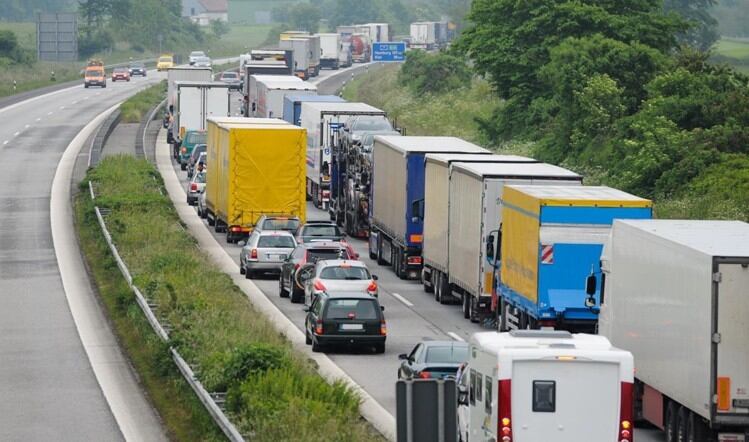Data has become a hot commodity among supply chain managers, as the use of tech to map and monitor the movement of goods has become intrinsic in the optimal running of food and drink businesses.
Being able to see the bigger picture and the ability to drill down into the smallest minutia of the supply chain has become even more important as major global events such as COVID-19, the war in Ukraine and Brexit create uncertainty and shortages.
Phlo Systems founder and chief executive Saurabh Goyal said: “Recent shortages have put the spotlight on the need for future-proof supply chain management systems superseding what has been offered by conventional inventory control processes.
“There’s no doubt that businesses are now willing to move away from the traditional supply chain management model in order to boost their efficiency and visibility – and we are seeing increasing demand for our products which are helping to streamline international trade, finance and customs management, making it easier, faster, cheaper, more secure and transparent.”
“The ultimate goal of the digital supply chain is, of course, to provide insights that lead to better efficiencies, reduced waste and increased revenues. So, who wouldn’t want to make savings in every area of their business while also achieving a smaller environmental footprint.”
Automation is seen as the natural progression for the digital food chain. Simple mobile apps make the hassle of ordering multiple items and repeat orders a thing of the past – human error on both sides is eliminated, reducing the delivery of wrong products and ultimately reducing food waste.
Automation is key
Alex Kiely, UK general manager at delivery platform Choco, said: “Automation is particularly important in an industry where suppliers are working 24/7 due to a limited workforce, and restaurants are working round the clock to provide the ultimate gastronomic experience to customers.
“The UK has a real appetite for tech. The food industry in particular knows that digitising their business is not an option anymore, and they have to act now.”
Chief executive Daniel Khachab said the idea was simple – reducing ordering mistakes eliminates waste every step of the way.
“Reduce ordering mistakes and eliminate waste every step of the way. We estimate that, when using the Choco app, restaurants are saving on average 1.27 kg every week, by reducing their ordering mistakes and saving up to two hours every week, improving their efficiency in the kitchen.
“By building a powerful ecosystem that we are now expanding to the UK market, we will help move the industry into the 21st century.”
Of course, there are many other ways that food can be wasted along the supply chain. The logistics of getting food to and from different ends of the country require supply chain managers to anticipate the condition of their products throughout their journey.
Packing and shipping
Up until recently, there wasn’t a major consideration on how a product would be packed and shipped. Sturdy packaging made the products safe from harm and copious amo9unts of plastic wrap kept them from moving too much in the back of a truck.
But with carbon usage and our impact on the environment still an ever-present part of business considerations, it's no wonder that new bills such as the plastic packaging tax have come into effect.
While the safety of food has always come into question as food firms are forced to remove plastic from packaging – for all the concern for the pollution can cause, it remains one of the best ways to keep food fresh and protected from contaminants – concerns have now been raised over the stability of those products while in transit.
In the drinks industry, the movement away from plastic rings for packs of canned drinks has caused significant movement in transport (MIT) issues. Eco-friendly alternatives such as fibre-based secondary packing aren’t up to the task of keeping goods from being damaged in transit.
“This has resulted in many pallets of beer arriving damaged and being rejected by customers,” explained Rick Sellers of Lindum Packaging. “The damaged packs can’t be resold, so they have to be thrown away or redistributed at great cost to the business. Throwing away large amounts of beer is not simply a financial loss: it creates food waste which is a major contributor to carbon emissions.
“What’s more, all the carbon embedded in making the cardboard wraps and aluminium cans as well as transporting them to the customer is also wasted. This far outweighs the carbon that’s been saved by moving away from plastic packaging.”
Failings of cardboard sleeves
Working with a major Brewery, Lindum found that cardboard sleeves were more likely to experience MIT than plastic rings and that printed cardboard wraps and cartons slide against each other on pallets due to the shiny print surface. Ultimately, the effects of changing from plastic to paper on the overall packaging system hadn’t been considered, especially in the area of pallet wrapping.
Subsequent testing during palletising identified that the pallet wrapping machines at the end of each line was not calibrated and were using the wrong stretch wrap. Regular maintenance had also been overlooked, adding to stability problems.
Correcting these problems and using a much stiffer plastic stretch wrap has reduced MIT issues by 86% delivering major savings to the company.
“Whilst it may seem ironic to be using plastic stretch wrap to reduce stability issues caused by a move to plastic-free packaging, the lesson should not be lost on any brewer looking to make a similar move,” Sellers added.
“The root cause of most of the MIT issues could have been avoided with proper testing when the decision to move away from plastic was made. But that’s the thing about the law of unintended consequences, you don’t know what you don’t know, until you see the effects of a decision.”
Nearshoring and diversification of supply
After such an unprecedented degree of disruption, food and drink firms need to be conscious of the risks to their supply chains if they wish to retain custom and revenue.
“A supply chain risk assessment should examine the entirety of the supply chain, from suppliers to customers,” explained Scala executive director Dave Howorth. “The aim is to identify critical points of failure or over reliance on specific suppliers, geographies, and technologies.
“Each point in the supply chain has a unique set of risks that makes it vulnerable, should disruptions occur. In the food industry, reliance on one product supplier places manufacturers in a difficult situation should this supplier be unable to operate. This has been evidenced by the Ukraine crisis, as Europe is heavily dependent on wheat from Ukraine and Russia.”
To avoid further price hikes and increase availability, Howorth suggested UK manufacturers should begin sourcing from multiple suppliers to minimise the disruption risk, reduce costs and make their businesses more responsive to market changes.
“Manufacturers can also consider nearshoring, which involves moving operations to a different area within the same region to reduce risks in the supply chain,” he continued. “This is a reversal of the recent trend, offshoring, when operations are often moved to the other side of the globe.
“Operational costs will clearly change with nearshoring, and these may be quite complex to understand, but most importantly it lessens the risk to the supply chain. This is often the answer for companies wanting to reduce their geographic dependence.
“Sourcing ingredients from the UK and nearby European countries will shorten supply chains, reduce delivery times, and minimise stock shortages. As we approach the retail peak quarter, food and drink companies should be learning from their experience of Covid-19 and Brexit fuelled transport delays last Christmas and considering nearshoring suppliers where possible.”





